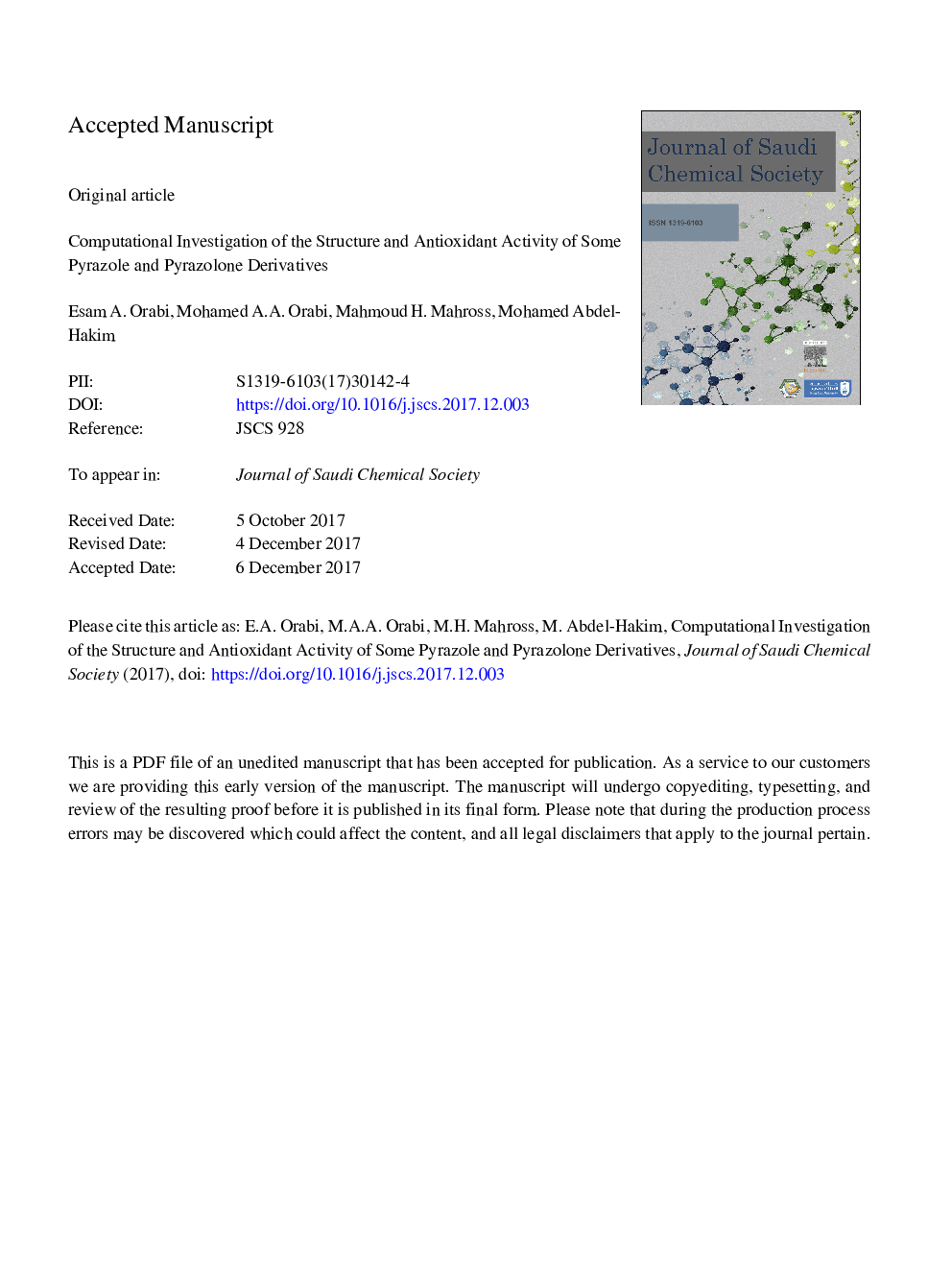| Article ID | Journal | Published Year | Pages | File Type |
|---|---|---|---|---|
| 8953415 | Journal of Saudi Chemical Society | 2018 | 30 Pages |
Abstract
Pyrazoles and pyrazolones constitute a group of organic compounds that have various medical applications such as antimicrobial, antipyretic, anti-inflammatory, antitumor and antioxidants. Pyrazolones can exist in different isomeric forms (CH, NH, OH) due to keto-enol, lactam-lactim and imine-enamine tautomerism. Determination of the most stable tautomeric form is thus important for understanding their biological roles at the molecular level. We performed a theoretical investigation of the structural and antioxidant properties of three synthetic pyrazolones (1-3), one synthetic pyrazole (4), one natural pyrazole (5) and two engineered hydroxyl derivatives of 1 (7, 8) and of 5 (9, 10) using the density functional theory at the B3LYP/6-311++G(d,p) level of theory in gas phase and in methanol (using the polarizable continuum model). It is found that substituents and solvents may influence the relative stability of pyrazolone isomers and that the CH tautomer is typically the least stable. Vertical ionization potentials, vertical electron affinities and X-H bond dissociation energies (Xâ¯=â¯C, N, O, S) are calculated for the global minimum structures and compared with those of the standard antioxidant flavonoid quercetin (6). Calculations predict that compounds 1 and 5 have antioxidant activity similar to 6 and that their mono and dihydroxyl derivatives (7-10) are more efficient antioxidants. Results also indicate that compounds 1-10 preferably interact with free radicals adopting the H atom transfer rather than the sequential electron transfer proton transfer mechanism. The study gives insight into the structural requirements for the design of highly efficient antioxidants.
Related Topics
Physical Sciences and Engineering
Chemical Engineering
Chemical Engineering (General)
Authors
Esam A. Orabi, Mohamed A.A. Orabi, Mahmoud H. Mahross, Mohamed Abdel-Hakim,
